18 Types of Pommels on Medieval Swords
NO AI USED This Article has been written and edited by our team with no help of the AI
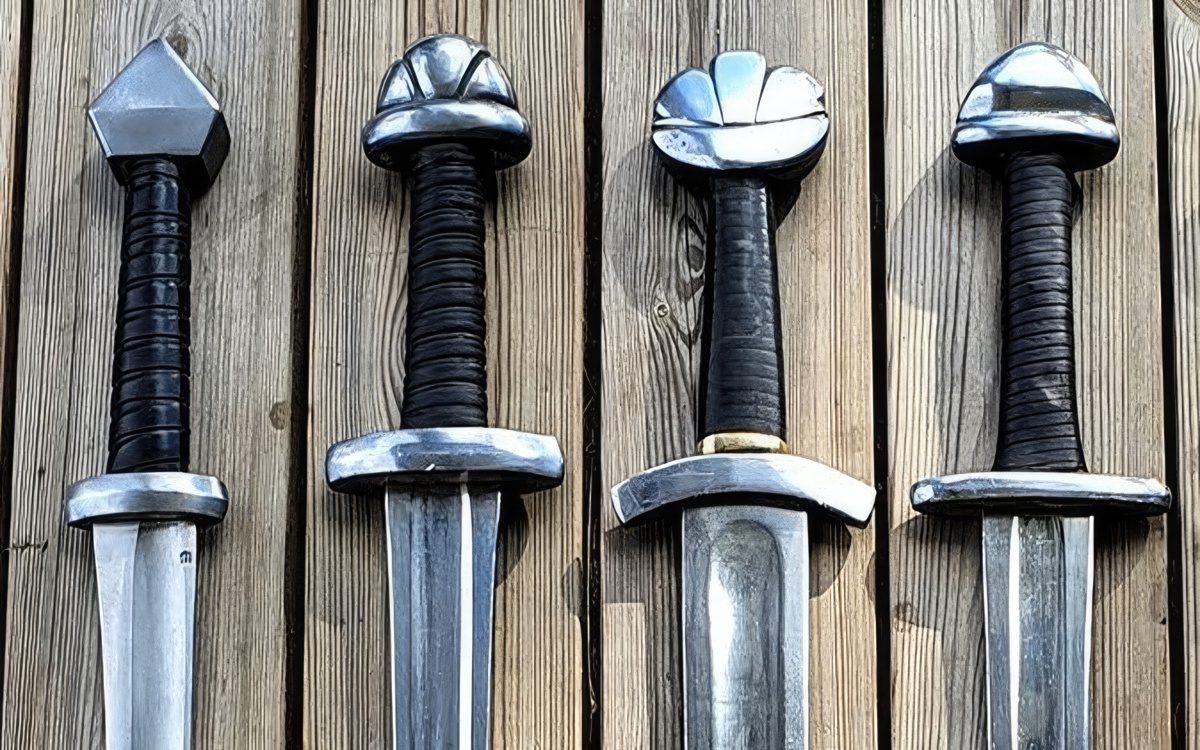
A pommel is the knob-like structure at the end of a sword’s hilt, playing a crucial role in the sword’s balance, handling, and overall aesthetics.
Throughout the medieval period, pommel designs varied greatly, prompting historians to create a typology to systematically classify them.
These variations in pommel design offer a fascinating glimpse into the craftsmanship and functionality of medieval swords, each style showcasing unique features and purposes.
Using Pommels to Date Medieval Swords
Medieval swords are often classified based on features such as the pommel. Having evolved to reflect the changing trends of the period, pommels are a key feature for dating swords.
Historians have established numerous sword classification, with Ewart Oakeshott’s work being the most renowned. His typology identifies 25 main pommel types, some with further subtypes. Still, Oakeshott acknowledged that certain historical swords defy classification due to their unique design.
Other sword classification systems focus on different factors, such as hilt forms, crossguard styles, and blade shapes. These typologies are commonly used by museums, auction houses, historians, and collectors to categorize and study swords.
1. Brazil-Nut Pommel

The brazil-nut pommel, named for its resemblance to a brazil nut, features several variations, typically wide in design. Some rounder and more bulbous versions resemble a peanut more than the Brazil nut.
Common between 950 to 1250 CE, it evolved from earlier Viking pommels and was primarily found in northeastern, central, and eastern Europe. Historian Ewart Oakeshott attributed its enduring popularity to its practicality in sword handling.
2. Tea-Cozy or Mushroom Pommel
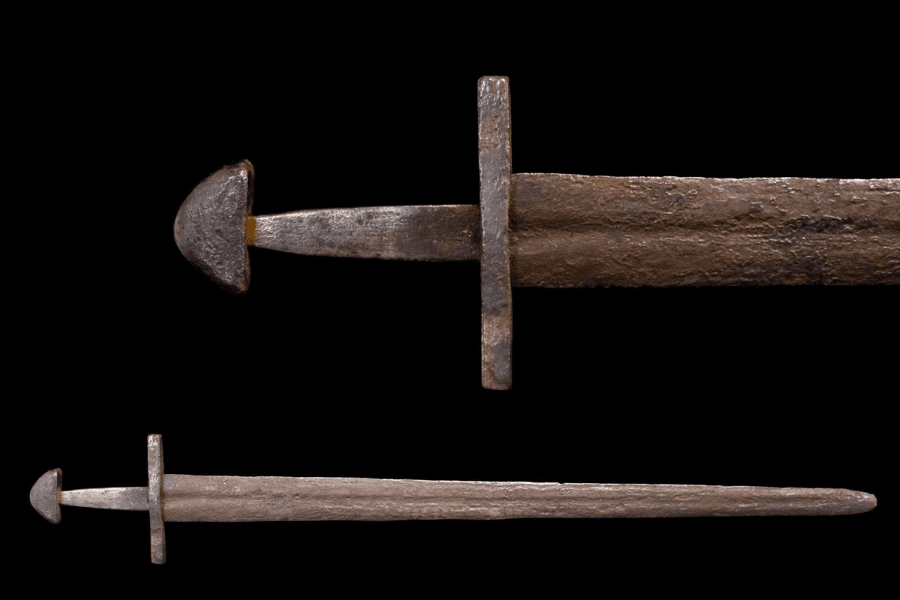
Named by historian Ewart Oakeshott, who noted that “the flatter ones resemble an empty tea cozy, while those with more bulk resemble a tea cozy with a teapot inside,” the tea-cozy pommel was common around 800 CE but became rare by 1200 CE.
It was mostly found in western Europe, particularly in the old Carolingian regions of Austrasia and Neustria. German antiquarians referred to it as Pilzformige, comparing it to certain types of toadstools or mushrooms. However, it is not circular; instead, it has a straight lower edge and rectangular corners which can be uncomfortable for wielders with larger hands as a corner may dig into the wrist.
3. Cocked Hat Pommel
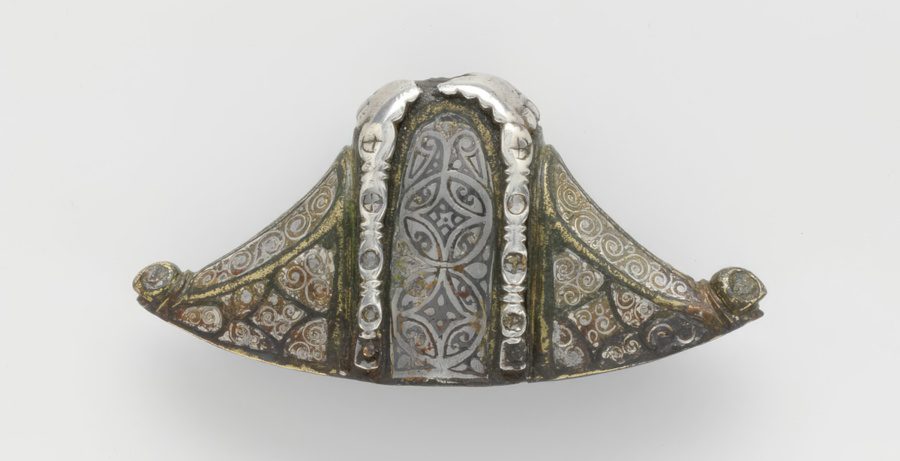
The cocked hat pommel is distinguished by its hat-like shape, evolving from Viking pommels with similar designs but featuring a taller crown and crafted as a single piece. Popular between 980 and 1100, this style frequently appeared on Anglo-Saxon swords. A stouter, bulkier variation emerged later, dating approximately from 1230 to 1280.
4. Faceted or Angular Pommel
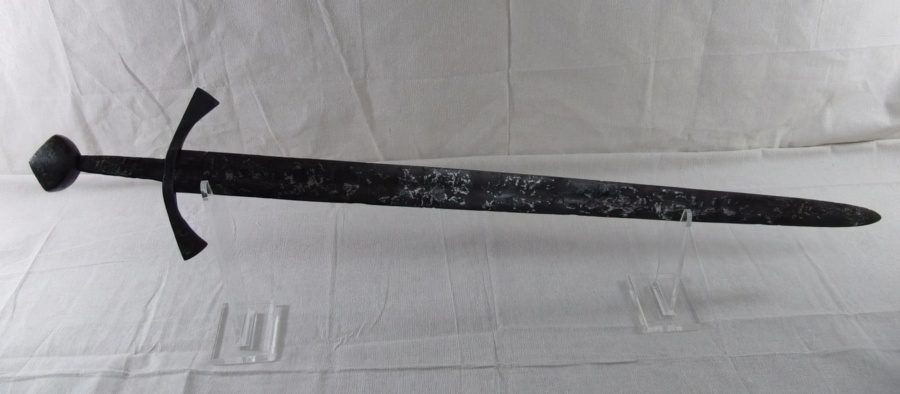
The angular pommel is characterized by its triangular top, often featuring a pronounced mid-rib, and a rounded or curved bottom, resembling a cone with a rounded base. A notable example can be seen on the sculpture of Count Konrad among the Benefactors of Naumburg Cathedral. It also appears on the sword hilt of Margrave Hermann, a member of the influential Ekkehardins noble family in the early 11th century.

5. Diamond Pommel
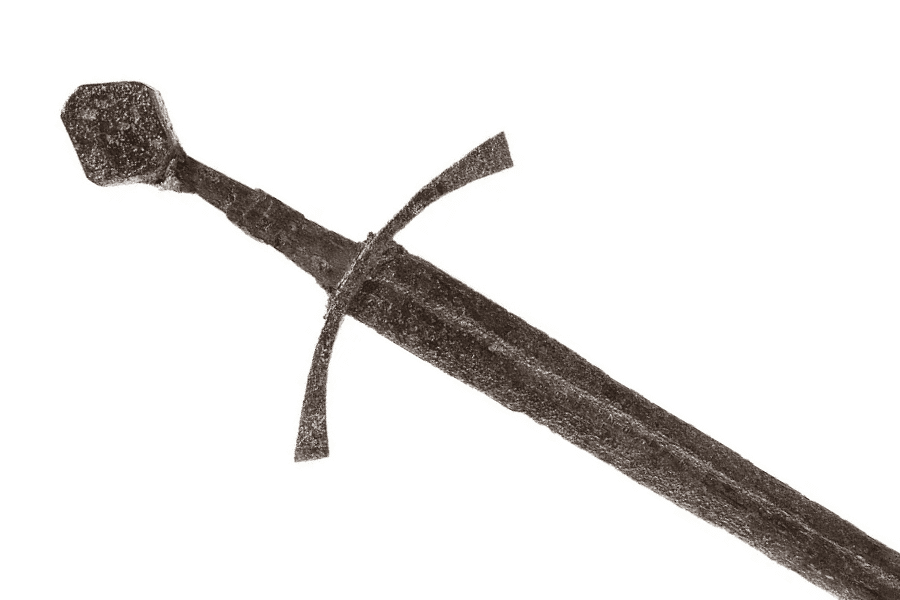
Aptly named, the diamond pommel is diamond shaped, often featuring a pronounced mid-rib. Some museum examples even showcase diamond-shaped pommels with rounded corners. This design was popular between 1175 and 1275.
6. Disc-Shaped or Wheel Pommel
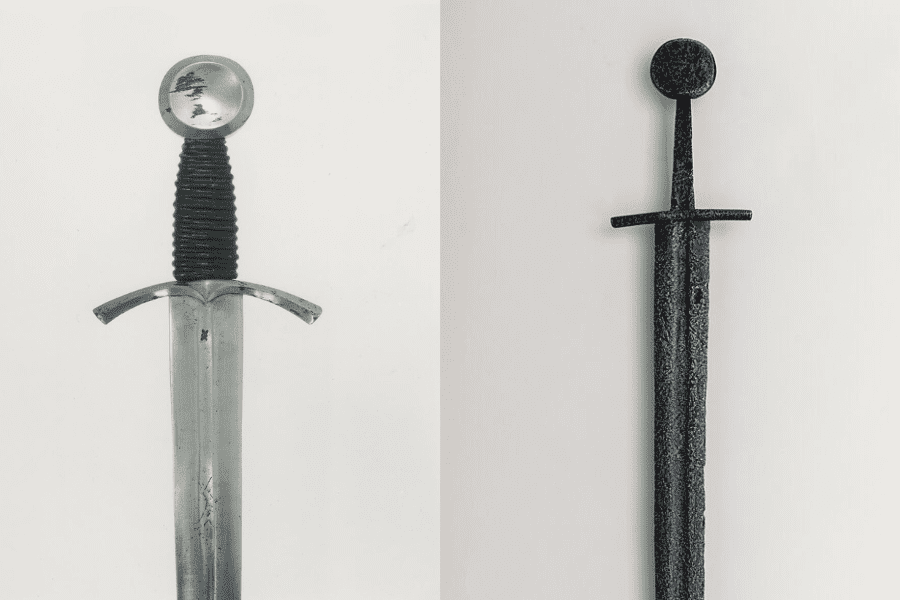
Disc-shaped pommels were common in knightly swords from the 11th to 16th centuries. They came in various styles including plain discs, flat or rounded forms with incised designs, as well as discs with beveled or hollowed edges.
First used during the Viking period, the plain disc pommel remained in use until 1380 in Italy and Spain. In contrast, the beveled-edge disc pommel became the most popular style of the later Middle Ages.
7. Angular Trefoil Pommel
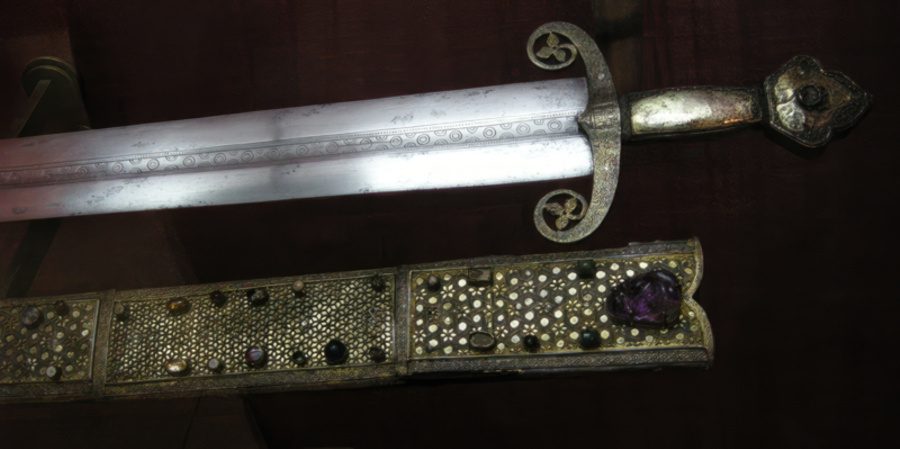
The angular trefoil pommel was rare, with the Sword of St. Ferdinand in Madrid being the only known surviving original example. This design is believed to be of Spanish origin, as similar maple-leaf-shaped pommels appear in several Spanish manuscripts from the 12th and 13th centuries.
8. Lobed Pommel
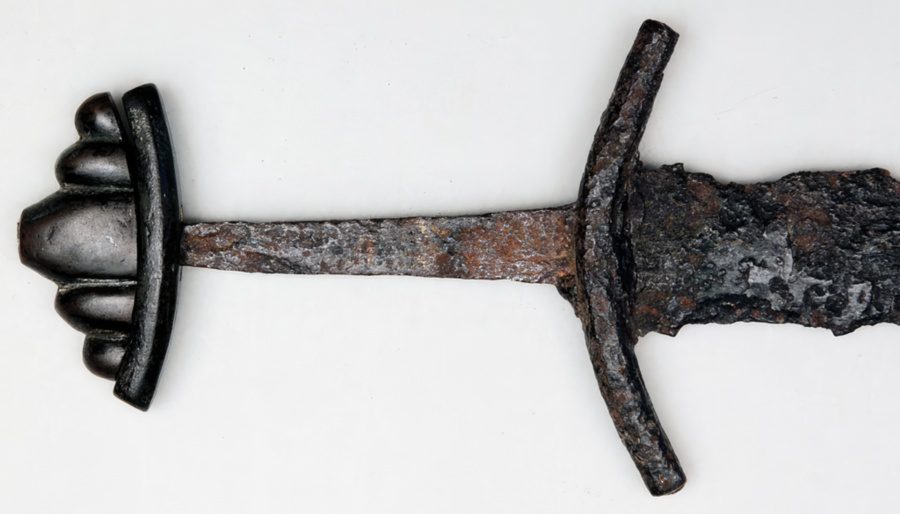
The lobed pommel evolved from the Viking-era multi-lobed pommel and is considered distinctively British, as it is commonly found on monuments in England and Scotland from the 13th and 14th centuries.
However, rare examples have also been found in Norway, Denmark, and Germany. A notable depiction is seen on the effigy of Robert Curthose, Duke of Normandy, in Gloucester Cathedral.
9. Boat-Shaped Pommel

Named after its resemblance to a boat, there are few surviving examples of the boat-shaped pommel, typically on large war swords. This style mostly appears in period art with notable examples such as the short sword of Wilhelm von Camburg, depicted among the Benefactors of Naumburg.
10. Crescent-Shaped Pommel
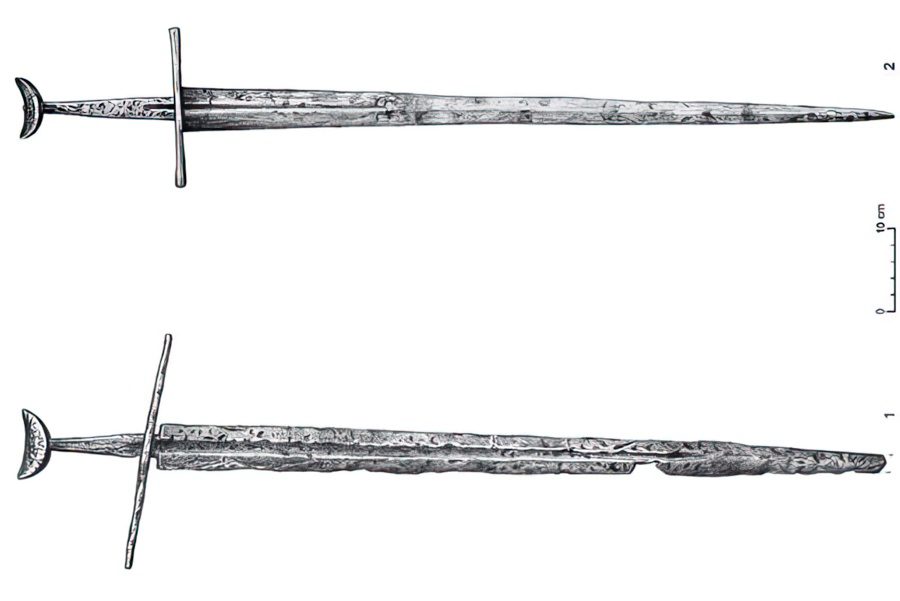
Exceptionally rare, there are very few surviving examples of the distinctive crescent-shaped. It is most often depicted in period art around 1300 in sculptures as seen in the Cathedral of Freiburg on St. George and St. Sebastian’s long-gripped war swords, St. Peter in the Garden of Gethsemane, and one of the sleeping guards at the Sepulchre.
11. Shield-Shaped Pommel
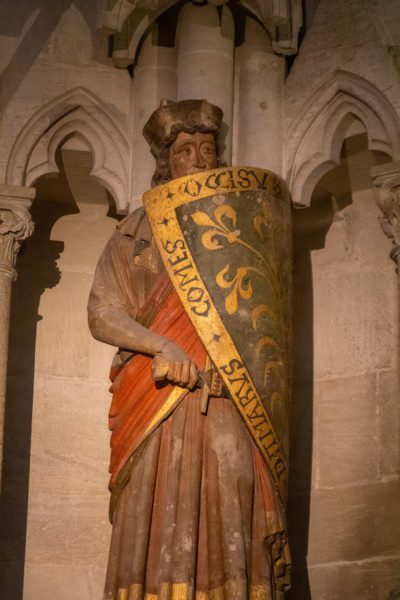
Another rare and distinctive type, historian Ewart Oakeshott noted that the single known example of the shield-shaped pommel is found on the sword of Count Dietmar, a benefactor of Naumburg Cathedral.
12. Floral Pommel
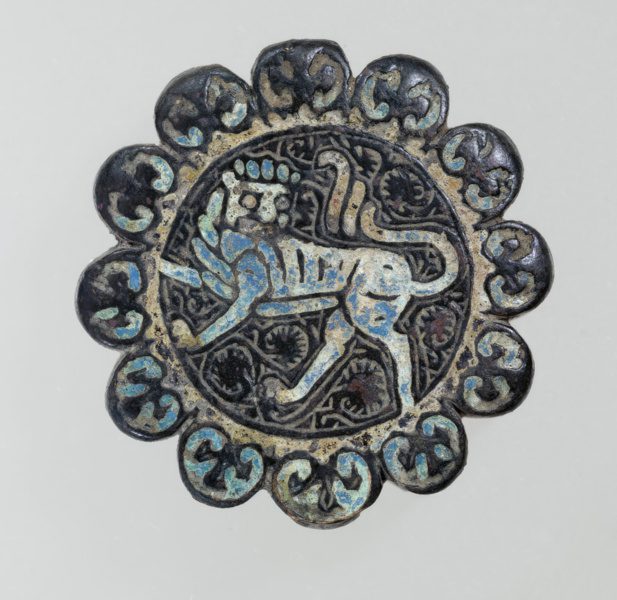
The floral pommel, characterized by scallops or lobes around its edge, was used from the 13th to 14th century. It is among the distinct sword pommels dating back to the Crusades. Most were found in the Middle East, known as the Holy Land during the medieval period.
Some floral pommels feature their family or owner’s insignia. Museum examples showcase designs like the fleur-de-lis and heraldic lions or leopards, symbols likely representing France and England.
13. Spherical or Globular Pommel
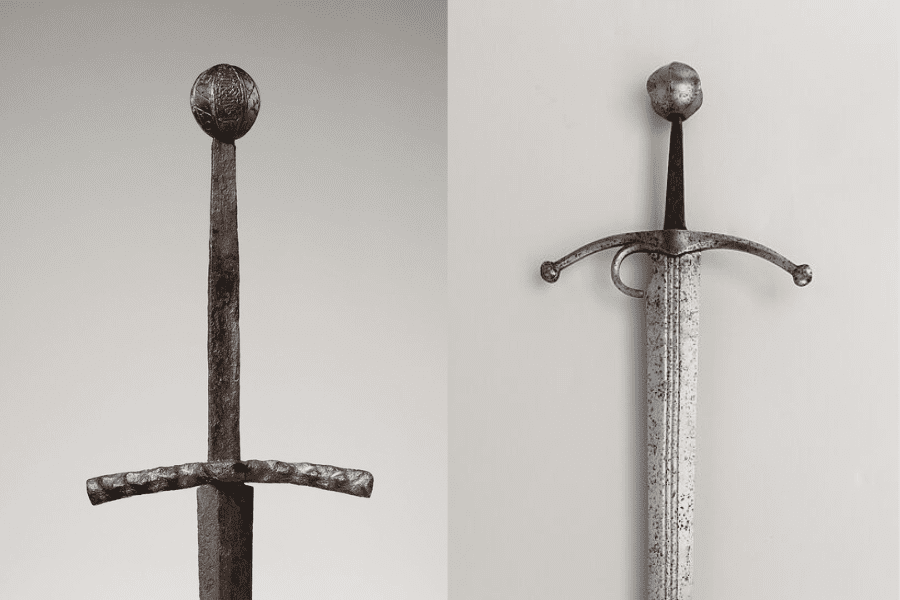
As its name suggests, a spherical pommel is globular in shape. While most examples are from the 9th to 10th centuries, some date as late as the 16th century.
According to Ewart Oakeshott, the spherical pommel is surprisingly rare despite its seemingly practical design. A notable example is seen on the sword of Goliath in the Maciejowski Bible.
14. Cube Pommel

The cube pommel, characterized by its cubic form with beveled corners, is a rare design dating to the early 14th century.
Ewart Oakeshott identified an example on an English effigy from approximately 1310 to 1320 at Halton Holgate in Lincolnshire, likely representing Henry de Halton, whose brother Richard served as Rector of St. Andrews around 1360.
15. Scent Stopper Pommel
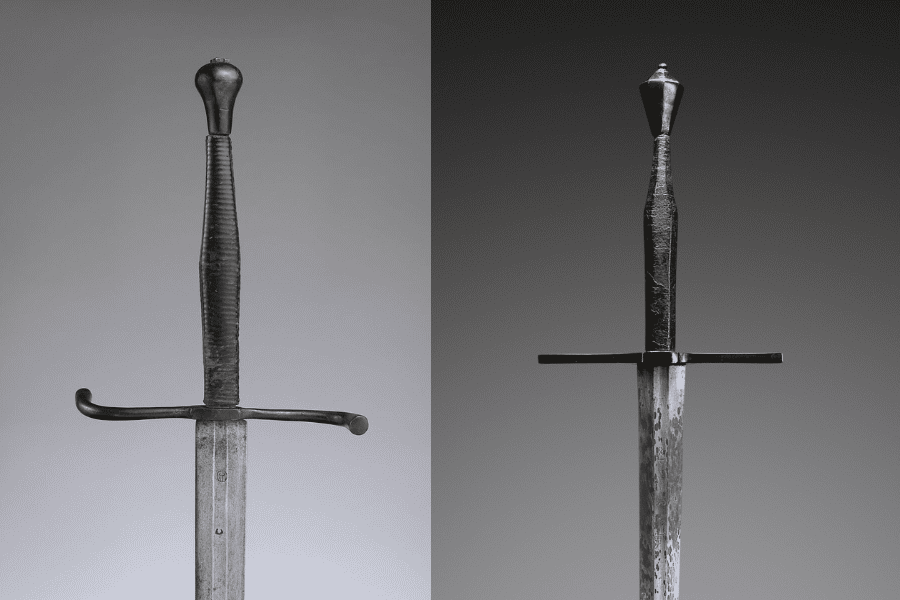
Scent stopper pommels widely vary in design, including faceted, truncated-wedge, pear-shaped, and elongated variants. They were common across Western Europe from the 14th century to 16th centuries, especially on longswords or hand-and-a-half swords.
16. Key-Shaped Pommel
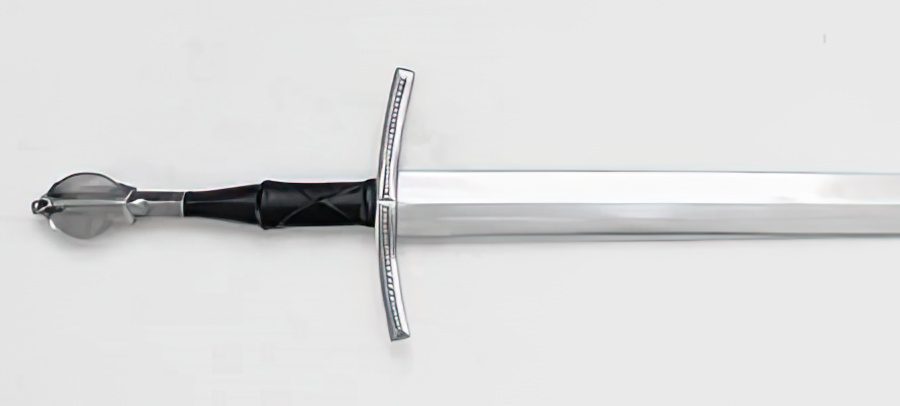
The key-shaped pommel, resembling the watch keys of the 19th century, is also often described as a flattened pear shape. It became popular during the 15th century and is commonly seen on estoc or thrusting swords.
17. Fish-Tail Pommel
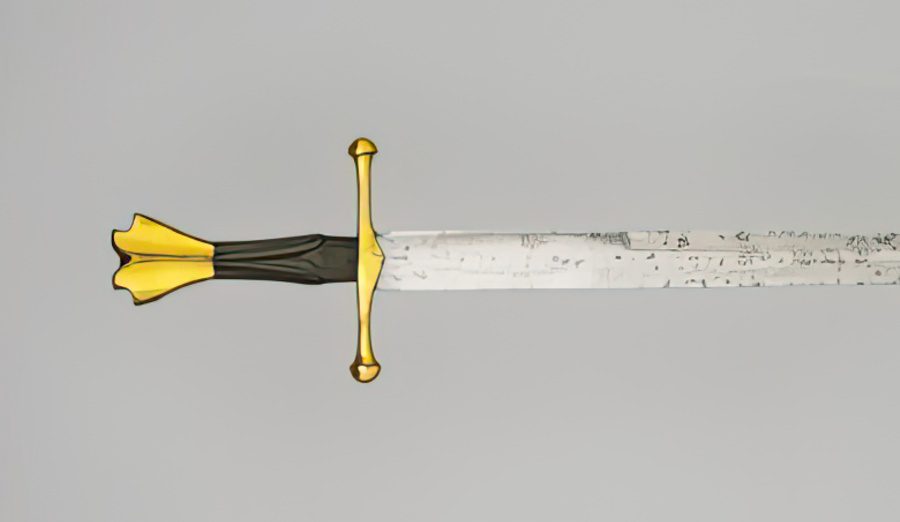
The fish-tail pommel was primarily used in Northwestern Europe during the 15th century. Its Italian variation features concave edges that flare out and taper toward the bottom. While relatively rare, it can be seen on single-handed and two-handed swords.
18. Cat’s Head Pommel
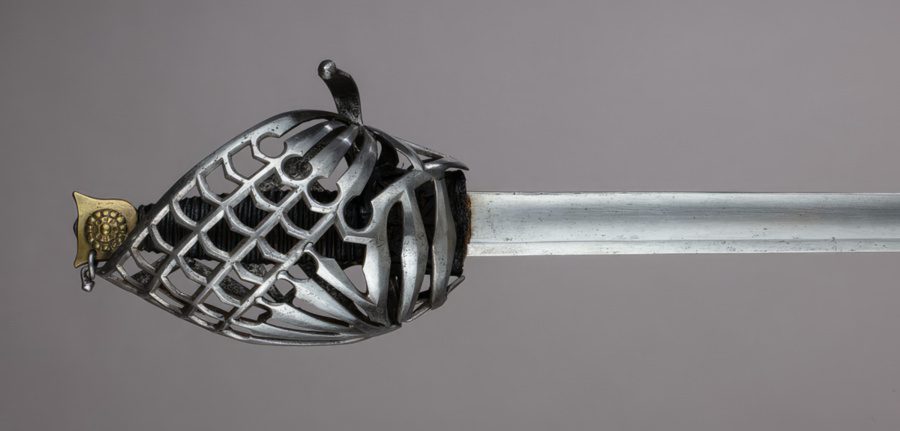
The cat’s head pommel is distinctively of Venetian design, often with animal representation on its face. Its earliest use can be traced back to the Oakeshott Type XIIIa 14th century great swords (grete swerdes). This form persisted into the 18th century, becoming the commonest pommel in Venetian basket-hilted broadswords known as the schiavona, used by Slavonic Dalmatian troops.

